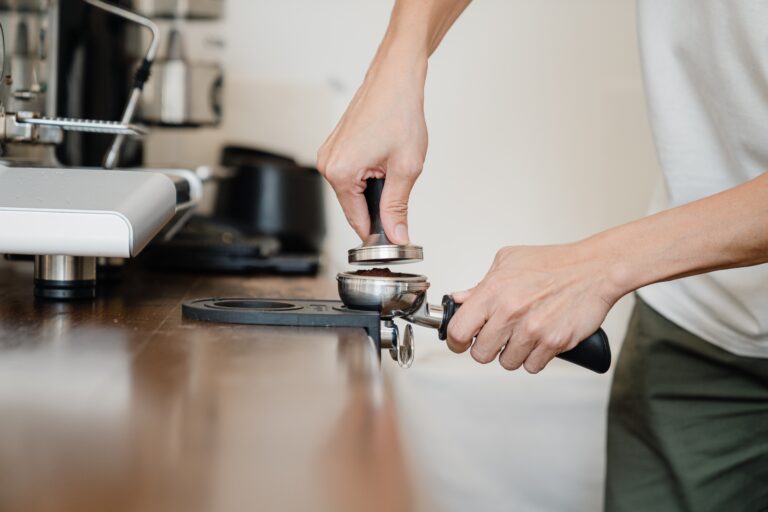Espresso Grind: The Complete Guide

Espresso, with its rich and concentrated flavor, is a beloved coffee beverage that relies on various factors for its perfect taste. Among these, one of the most crucial elements is the espresso grind. In this comprehensive guide, we will delve into everything you need to know about espresso grind – from its importance and determining the right grind size to how to adjust it based on different factors. We’ll also explore the differences between flat and conical burrs in our FAQs section.
Why is Espresso Grind Important? 🤔
The grind size plays a pivotal role in the world of espresso as it directly influences the extraction process. The goal is to extract the right balance of flavors and compounds from the coffee grounds within a specific time frame. A grind that is too fine can lead to over-extraction, resulting in a bitter and harsh flavor. On the other hand, a grind that is too coarse might lead to under-extraction, yielding a weak and sour taste. Finding the sweet spot in grind size is essential for that perfect shot of espresso.
Determining the Right Grind Size for Espresso 📏
Achieving the perfect grind requires precision and understanding. Here’s how to determine the right grind size:
1. Visual Cues
Aim for a grind that resembles fine table salt. It should be slightly finer than granulated sugar but not as fine as flour. This visual reference will provide a good starting point.
2. Timing
For an ideal shot, the extraction time should be around 25-30 seconds. If your shot takes significantly less time, your grind might be too coarse, and if it takes much longer, it might be too fine.
3. Taste Test
Ultimately, the taste of your espresso is the best indicator of the right grind size. A well-extracted shot should have a balanced flavor profile, rich crema, and a pleasant aftertaste. Experiment with grind sizes and taste the results to fine-tune your espresso-making process.
Factors That Change Espresso Grind Size ⚙️
Several factors can influence the grind size needed to achieve the perfect espresso shot. Here’s how to adapt your grind size based on these factors:
1. Bean Age
Freshly roasted coffee beans release more carbon dioxide, requiring a coarser grind to slow down extraction. As beans age and release less gas, they might necessitate a finer grind to maintain the optimal extraction time.
2. Humidity and Climate
Humid environments can cause coffee grounds to clump together, affecting the extraction process. In such conditions, use a slightly coarser grind to compensate for the clumping.
3. Machine Temperature
Espresso machines with stable temperatures result in more consistent extractions. However, if your machine tends to run hot, it may extract coffee faster, requiring a finer grind to slow it down. Conversely, if your machine runs cooler, a coarser grind may be necessary to achieve the desired extraction time.
4. Blend and Origin of Coffee
Different coffee blends and origins can require varying grind sizes due to their unique properties. Experiment with different grinds to find the best one for each coffee type you use.
FAQs about Espresso Grind ❓
Burr grinders are the best choice for espresso due to their consistent grind size. There are two main types of burrs: flat and conical.
Flat burrs tend to produce more uniform particles, making them popular for espresso. Conical burrs, while also effective, can sometimes lead to a more nuanced and varied extraction.
Espresso grind should resemble fine table salt. However, the exact fineness may vary based on the espresso machine, so some experimentation might be required.
Even distribution ensures uniform extraction, leading to a balanced and flavorful shot of espresso. Uneven grounds can result in channeling, where water finds paths of least resistance and causes inconsistent extraction.
While it’s possible, it’s not recommended. Pre-ground coffee quickly loses its freshness and might not yield the best results in terms of flavor and crema.
Conclusion 🎉
Achieving the perfect grind is an art that requires experimentation, attention to detail, and an understanding of various factors. With the right grind size, you can unlock the full potential of your coffee beans. Once you do that, you’ll enjoy delightful shots of espresso with rich crema and well-balanced flavors. By keeping in mind the factors that influence grind size and making small adjustments when needed, you’ll be well on your way to mastering the art of espresso-making.






